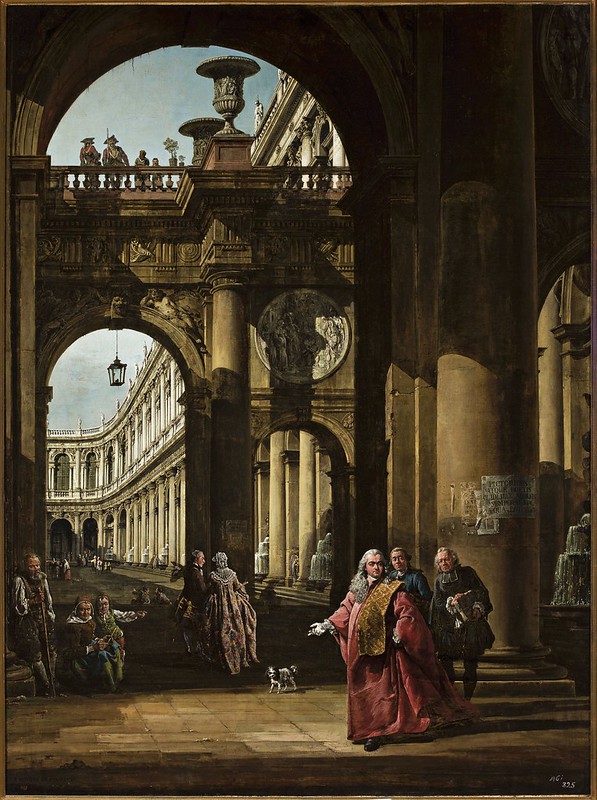Johann Wilhelm Hertel (1727-1789)
- Sinfonia G-Dur (c.1765)
Performers: Neubrandenburger Philarmonie
Further info: Johann Wilhelm Hertel (1727-1789) - Harp Concertos
---
German violinist, keyboard player and composer, son of Johann Christian
Hertel (1697-1754). Destined at first to be a lawyer or theologian, he
nevertheless received an early musical education from Bach’s pupil J.H.
Heil (1706-64) and by the age of 12 he accompanied his father as
harpsichordist on concert tours. In 1742-3 he was a violin pupil of Carl
Höckh, the Konzertmeister in Zerbst, and in 1744 he was violinist and
harpsichordist at the Strelitz court, where his father was also
employed. He had contacts with leading Berlin musicians such as Franz
Benda, C.H. and J.G. Graun, and C.P.E. Bach; Franz Benda taught him the
violin and C.H. Graun encouraged him to compose. After the Strelitz
Hofkapelle was dissolved (1752) he became court composer in Schwerin in
1754, and worked at times as organist and church music director in
Stralsund (1759-60). He was Princess Ulrike’s private secretary from
1764 and when the Hofkapelle moved to Ludwigslust in 1767 Duke Friedrich
dismissed him from it so that he could remain in Schwerin. From 1770 he
was the privy councillor in the service of Princess Ulrike but
continued to compose, arrange concerts at the court and give music
instruction. In his last years he gave up the violin and devoted himself
to keyboard instruments. In his youth Hertel was considered one of the
best violinists of Franz Benda’s school; he composed an impressive
series of nine violin concertos as well as chamber music and trio
sonatas. His 17 keyboard concertos, rich in invention and distinguished
by fluent passage-work, are important north German achievements in this
genre and rank beside C.P.E. Bach’s and A.C. Kunzen's. His sonatas and
other works for keyboard, mostly still typical of harpsichord
composition, are markedly inferior to the concertos. His 40 symphonies
occupy a major place in his creative output. While his symphonic writing
at first adopted the style of the Berlin school of Hasse and Graun,
after 1760 it underwent a stylistic change unique in north Germany at
the time by absorbing south German influences. Scored mainly for
strings, horns, oboes and flutes, his symphonies are notable for their
uncomplicated, straightforward technique and an almost aphoristic,
rhythmically succinct and brilliant handling of thematic material. He
also wrote incidental music for stage works, overtures and other
instrumental concertos including ten oboe concertos.

Cap comentari:
Publica un comentari a l'entrada